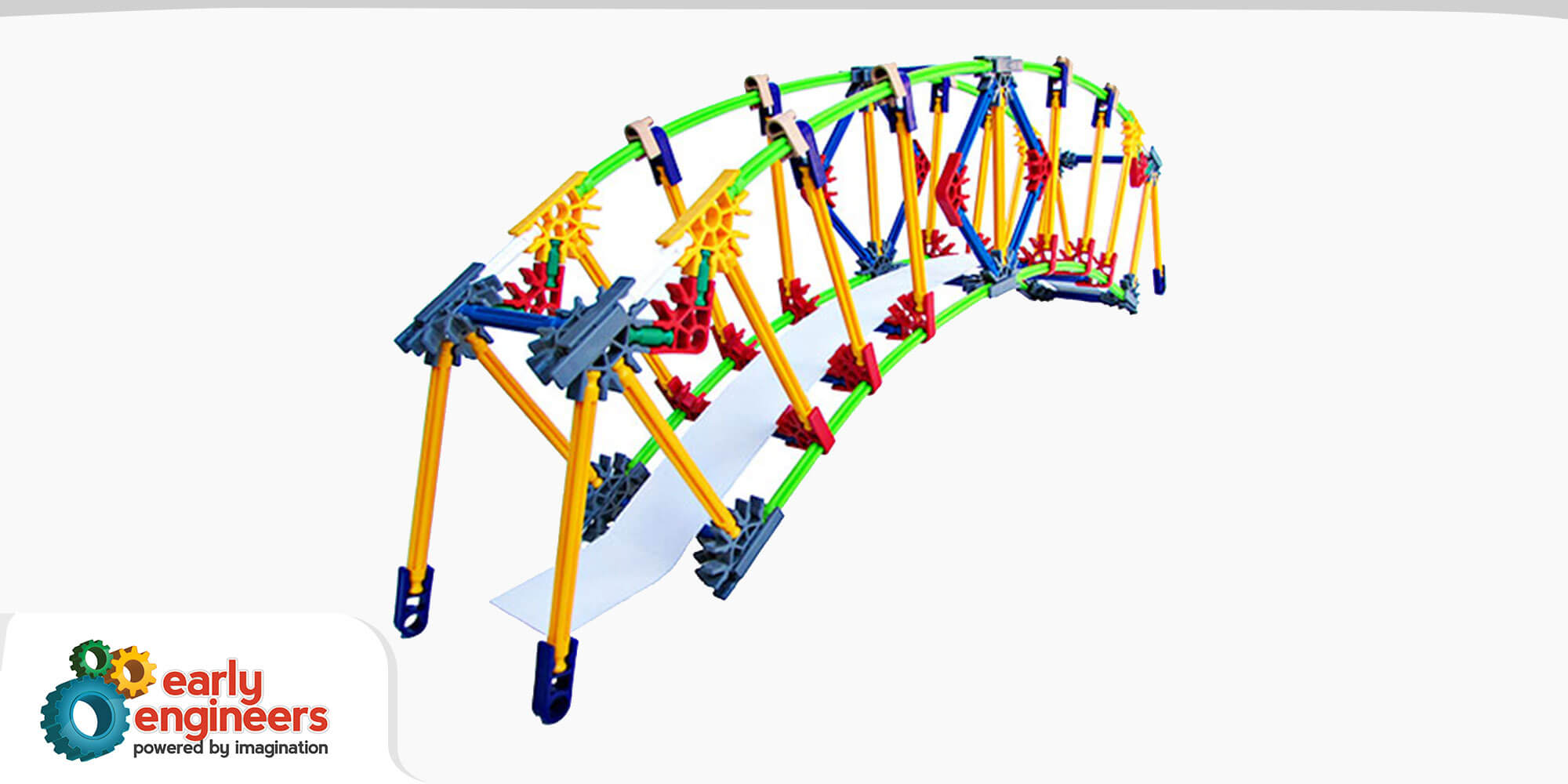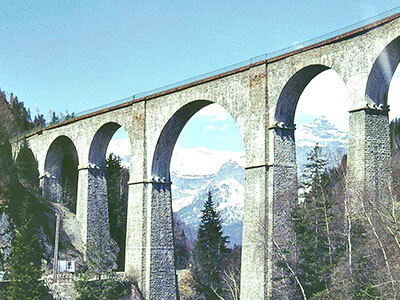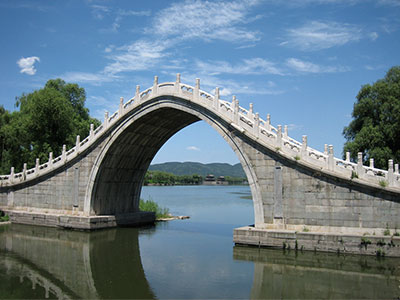Using bending K'NEX pieces, our Early Engineers made these amazing arch bridges and learned about the fundamentals of structural engineering!
An arch bridge is a curved bridge with abutments, or concrete supports, at each end. Arch bridges work by partially transferring the bridge weight and loads into a horizontal direction. These horizontal loads are then transferred to the abutments at either side, taking stress away from the bridge material and increasing its longevity.
Compressive forces are the primary forces occurring in an arch bridge. This is why arches are advantageous, since many materials respond better to compressive forces. Concrete is weak in tension but strong in compression. This is why ancient structures use so many arches, since concrete-like materials were too weak for other shapes.
Our Early Engineers made their K'NEX bridges in the same manner, with brace pieces at either end to support the structure. By extending the length of the bridge's top, our bold builders were even able to replicate the curving arch of the bridge with flexible rods. Check out some of these beautiful bridges!
We hope your little builder enjoyed this lesson in structural engineering. Join us again next time for a truly upside-down LEGO building challenge!






